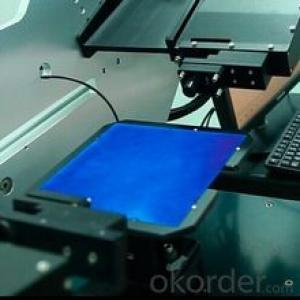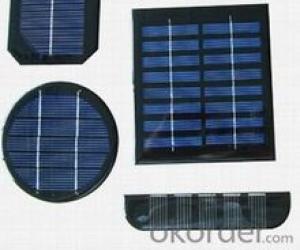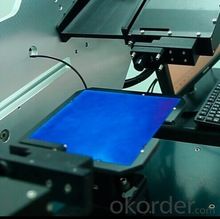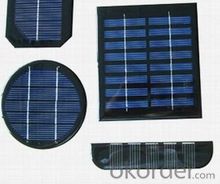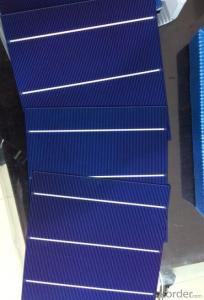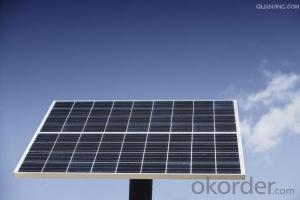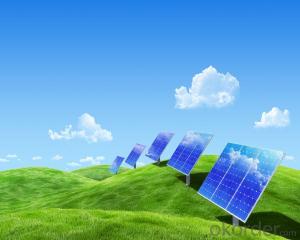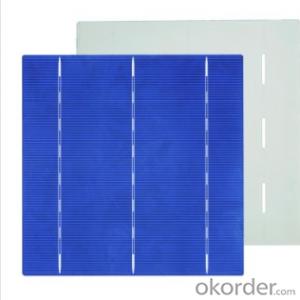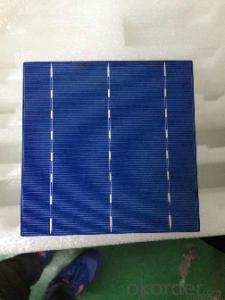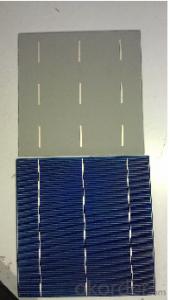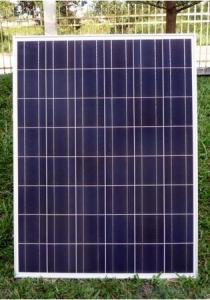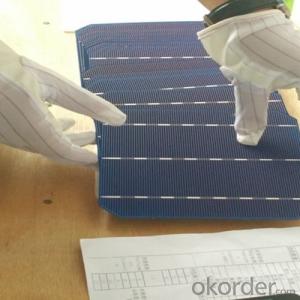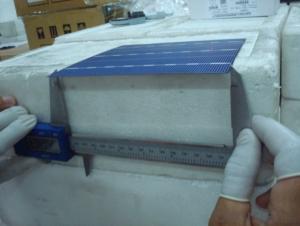Better Solar Cells:156x156mm Poly Solar Cell - High Efficiency CNBM PV Solar Cell Supplier
- Loading Port:
- Qingdao
- Payment Terms:
- TT OR LC
- Min Order Qty:
- 100 set
- Supply Capability:
- 300000 set/month
OKorder Service Pledge
OKorder Financial Service
You Might Also Like
Quick Details
| Place of Origin:china | Model Number: | TN-156P | Material: | Polycrystalline Silicon | |
| Size: | 156*156mm | Max. Power: | 4.53w | Efficiency: | 13.97~18.6 |
| Bus Bar: | 2/3 | Grade: | A/A-/B | Power Ppm(w): | 3.4w~4.53w |
Packaging & Delivery
| Packaging Detail: | Typical package for one carton contains 1,200 cells.The cells are sealed in cell box every 100pcs.Gross weight peri unit carton shall be around 17.1Kg. |
| Delivery Detail: | 1-3 days after payment |
6'' Low and High Efficiency Poly Solar Cell 156*156 mm
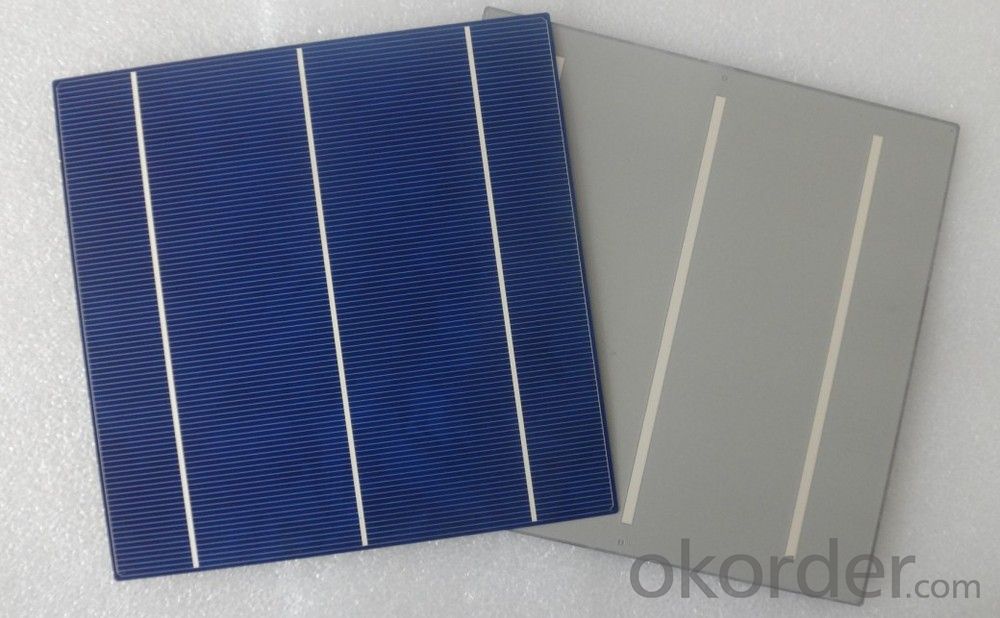
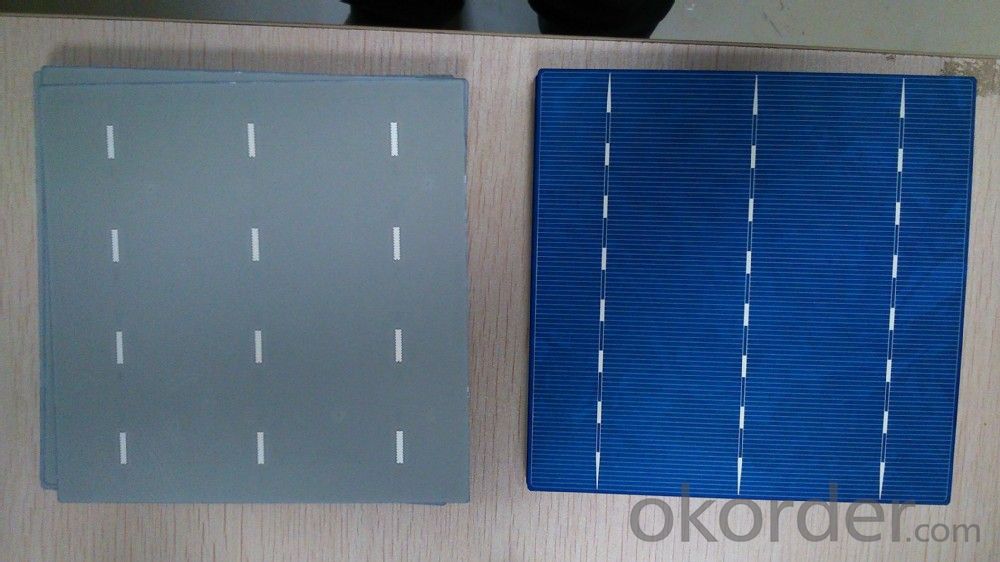
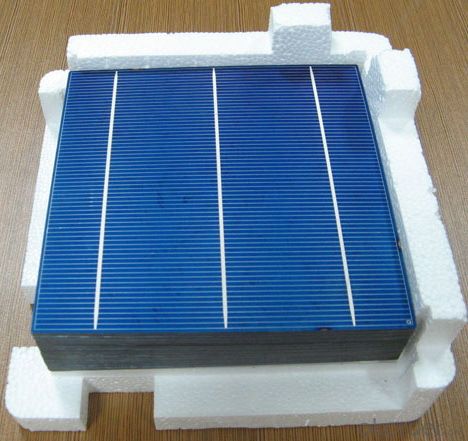
Our Advantage
Reason:
We enjoy exclusive channel to get solar cells at more competitive price from Sunpower,Neo solar,Motech,Gintechetc.
We signed long term purchase contract with our solar cell manufacturers,including but not limited to Neo solar,Motech,Gintech,AUO,then we can purchase unsorted solar cells in bulk from them and sort these unsorted solar cells into same efficiency,same pattern,same color by our own QA team. We call them Grade A-.
Quality :
These sorted solar cells have same electrical performance with Taiwan Grade A solar cells,only difference is the negligible superficial defect.
We can guarantee that they are better than grade A solar cells from tier 1 solar cell manufacturers in China mainland.
Price Comparison:
Efficiency 17.6, 2/3 Bus Bar Poly solar panel,
Taiwan Grade A price 0.31 USD/watt; Grade A- price 0.267~0.28 USD/watt
Product Description
1.Mechanical Properties :
Product Multi-crystalline silicon solar cell
Dimension 156 mm x 156 mm ± 0.5 mm
Thickness 200 μm ± 30 μm
Front 1.5 ± 0.1 mm busbar (silver)
Silicon nitride antireflection coating
Back 3.0 mm continuous soldering pads (silver)
Back surface field (aluminum)
2.Electrical Properties
Efficiency (%) Pmpp (W) Voc (V) Isc (A) Imin (A)
18.6 4.53 0.637 8.84 8.53
18.4 4.48 0.635 8.81 8.48
18.2 4.43 0.633 8.77 8.43
18.0 4.38 0.631 8.73 8.38
17.8 4.33 0.629 8.69 8.33
17.6 4.28 0.627 8.65 8.27
17.4 4.23 0.624 8.61 8.22
17.2 4.19 0.621 8.56 8.16
17.0 4.14 0.618 8.51 8.08
16.8 4.09 0.615 8.46 7.99
16.6 4.04 0.612 8.42 7.91
* Testing conditions: 1000 W/m2, AM 1.5, 25 °C, Tolerance: Efficiency ± 0.2% abs., Pmpp ±1.5% rel.
* Imin : at 0.5 V
3.Light Intensity Dependence
Intensity W/m2 Vmpp* Impp*
1000 1.00 1.00
800 0.99 0.80
600 0.99 0.60
400 0.97 0.40
200 0.94 0.20
4.Soldering Ability
Peel Strength: > 1.0 N/mm (Pull soldered ribbon from busbar in 5 mm/s of 180°)
Packaging & Shipping
1. Payment term: T/T in advance (W/U for sample order)
2. Lead time: It depends on your quantity. Usually we will send sample within 1-3 working days.
3. Shipping will be made via EMS, DHL, Fedex, UPS, Air, Sea etc. shipment

4. Others: If you have special specifications and requirements, we will do different offer as you required.
- Q: How do solar cells handle partial shading?
- Solar cells handle partial shading by using bypass diodes. These diodes help redirect the flow of current around shaded areas, minimizing the impact of shading on the overall system performance.
- Q: Can solar cells be used in areas with high pollution?
- Yes, solar cells can still be used in areas with high pollution. While pollution can reduce the efficiency of solar cells by blocking sunlight, advancements in technology have made solar panels more resilient. Additionally, regular maintenance and cleaning can help mitigate the impact of pollution on solar panels.
- Q: Can solar cells be used in traffic management systems?
- Yes, solar cells can be used in traffic management systems. Solar cells can be integrated into traffic lights, road signs, and other traffic management devices to power them using renewable energy. This helps reduce dependence on the traditional electrical grid, lowers energy costs, and promotes sustainability in traffic management systems.
- Q: How do solar cells perform in low-light conditions?
- Solar cells perform less efficiently in low-light conditions compared to bright sunlight. This is because they rely on the energy from photons in sunlight to generate electricity. In low-light conditions, such as on cloudy days or during sunrise and sunset, the number of photons reaching the solar cells decreases. As a result, the conversion of light energy into electrical energy is reduced, leading to lower power output. However, advancements in solar cell technology have improved their performance in low-light conditions, enabling them to generate some electricity even in dim lighting.
- Q: What are the 3 things you need to know before you start to make solar cells?
- I remembered I made solar cells with my dad when I was 10 years old, and all I can remember now are the difficulties in getting the silicon working properly.
- Q: How can the huge solar cells be applied into the market?
- The huge solar cells are more used in the industrial project, which needs more power supply in one time. Without the huge solar cells, it might not be able to work at all.
- Q: What is the environmental impact of solar cells?
- The environmental impact of solar cells is generally considered to be low. While the production process does generate some greenhouse gas emissions and requires the use of certain materials, such as silicon and metals, the overall emissions and resource consumption are significantly lower compared to fossil fuel-based energy sources. Additionally, solar cells do not generate air or water pollution during operation, making them a cleaner and more sustainable option for generating electricity.
- Q: Is it possible to learn how to make solar cells by yourself?
- I don't know how to make a solar cell by myself, but I am very interested in your trying to do it.
- Q: How do solar cells handle power quality issues?
- Solar cells do not directly handle power quality issues. However, inverters are used in solar power systems to convert the direct current (DC) generated by solar cells into alternating current (AC) that can be used in homes and businesses. These inverters often have built-in features to address power quality issues such as voltage fluctuations, harmonic distortions, and frequency variations. Additionally, grid-tied solar systems can rely on the electrical grid itself to handle power quality issues, as any excess power generated by solar cells can be fed back into the grid, ensuring a stable and reliable power supply.
- Q: Can solar cells be used in disaster relief efforts?
- Yes, solar cells can be used in disaster relief efforts. Solar cells can provide a reliable source of clean and renewable energy, which is crucial during times of disaster when traditional power sources may be disrupted. Solar cells can power essential equipment and devices such as lighting, communication systems, medical equipment, and water purification systems, enabling relief workers to effectively respond to the needs of affected communities. Additionally, solar cells can be easily deployed and are not dependent on fuel supply or infrastructure, making them ideal for disaster-prone areas or remote locations.
Send your message to us
Better Solar Cells:156x156mm Poly Solar Cell - High Efficiency CNBM PV Solar Cell Supplier
- Loading Port:
- Qingdao
- Payment Terms:
- TT OR LC
- Min Order Qty:
- 100 set
- Supply Capability:
- 300000 set/month
OKorder Service Pledge
OKorder Financial Service
Similar products
Hot products
Hot Searches
Related keywords
